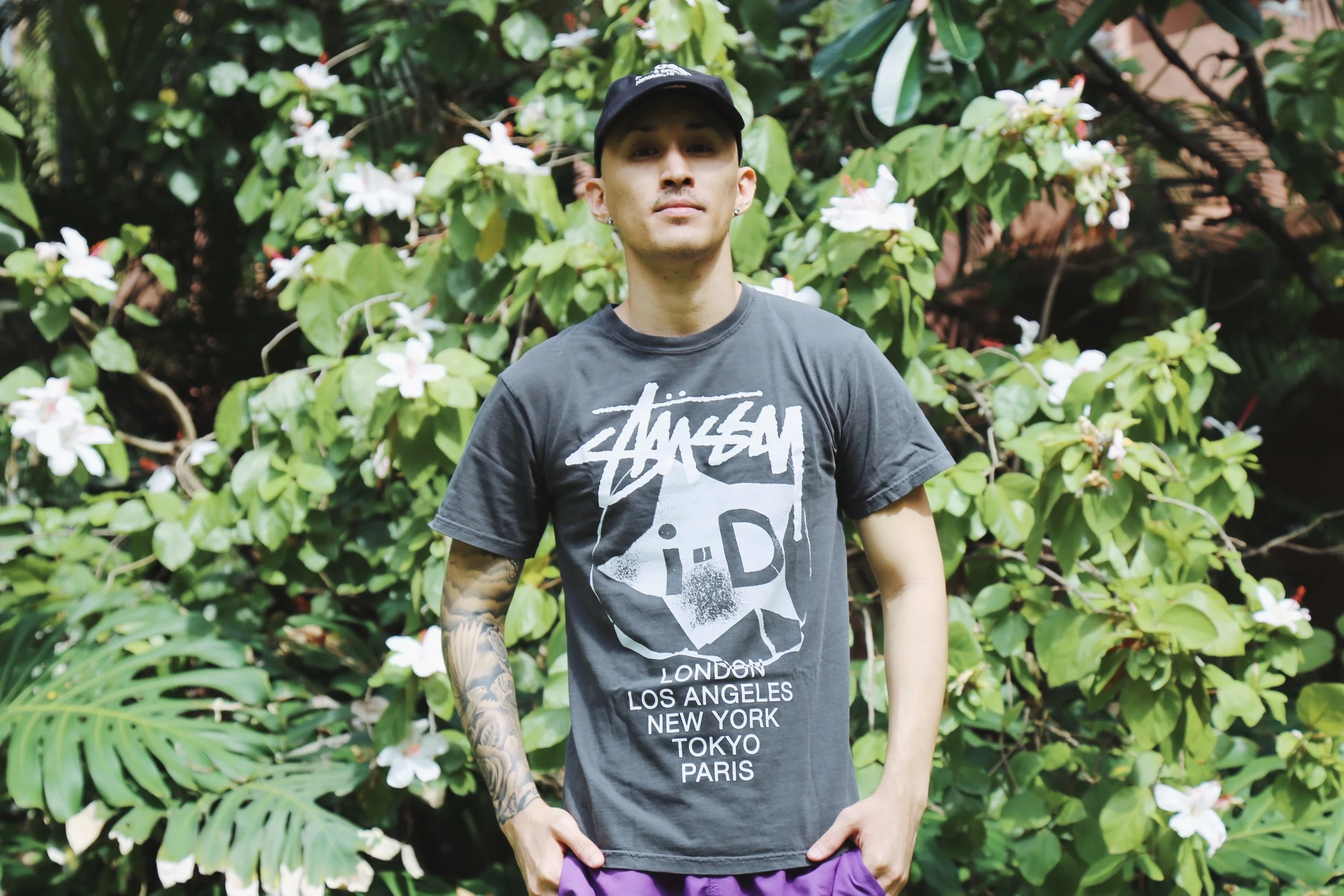Honolulu Streetwear: A Research Article.
*note the full research article link is at the end. This journal post is a reflection of my research journey.
“Streetwear is an art movement. It’s a way of making things,” the late Virgil Abloh once said. And he wasn’t wrong.
photo courtesy of: in4mation
Streetwear has always fascinated me — not just for how it looks, but for what it represents. It’s easy to dismiss it as a trend built on hype graphics and oversized silhouettes, and hey, if that’s how you see it, no judgment. But at its core, streetwear is about more than a logo or a limited drop. It’s a culture built by the marginalized, the outcasts, and the ones who chose to move outside of fashion’s traditional lanes.
Each region brings its own unique twist to the scene. The West Coast, with its skate and surf culture. The East Coast, pulling from hip-hop culture, and with the likes of Dapper Dan and Grandmaster Flash adding their touch to the culture. Tokyo, London, Paris — all with their own takes, their own textures, and their own stories stitched into every piece.
But what about Hawai‘i? What about the streets I grew up on, the local brands I wore, the scenes that shaped my sense of style?
photo courtesy of: in4mation
That question lingered in the back of my mind for years. And when I finally had the chance as a graduate student, I ran with it. I took on the opportunity to deep dive into streetwear culture in Hawai‘i — specifically in Honolulu — as the focus of my final research project. I’ll be honest, it took longer than expected (a mix of grad school burnout, a full-time job, and general procrastination), but eventually, I finished it. And that same year, it was published in Fashion Studies.
Looking back, this wasn’t just about research. It became personal. This project connected me to people I might not have met otherwise — local designers, brand owners, and everyday wearers who understood the language of streetwear in a way only someone from here truly could. It was a moment where I felt like I could express my love for fashion without feeling like the odd one out or worrying about being judged for it.
I chose to study streetwear because, to be honest, I was genuinely curious. It wasn’t about chasing academic accolades or trying to sound profound. I wanted to know why certain styles felt so distinctly Honolulu. Why vintage tees paired with Dickies, or an old-school pair of Jordans next to slippers, made sense here in ways it didn’t anywhere else. I wanted to understand how isolation, identity, and subculture shaped a style that’s always been present, yet rarely documented.
photo courtesy of: in4mation
Here’s a quick look at what I found (Absract)
Streetwear fashion and culture is a critical segment of the global fashion industry, with cities having their own unique version of the streetwear style and cultural identity. The city of Honolulu, located on O‘ahu, the most populated island of Hawai‘i, has a rich past and present in streetwear and local fashion that has gone both underrepresented and under-researched.
This paper aims to explore streetwear fashion, culture, and cultural identity in Honolulu by using Grounded Theory. Semi-structured, in-depth interviews with 12 participants, including four streetwear business owners and eight consumers, were implemented as the primary research methodology. Findings revealed two major themes and various sub-themes, highlighting the aesthetics, influences, and challenges of streetwear in Honolulu. First, this research shows that subcultures such as surf, vintage, breakdance, and sneaker culture contribute to streetwear identity in Honolulu. Additionally, a subculture unique to Hawai‘i called Moke also was found to contribute contributes to the overall aesthetic of Honolulu streetwear. The Moke streetwear aesthetic highlights how Native Hawaiian culture plays a role in shaping the subculture. Second, this paper explores how Honolulu’s geographic isolation hinders the growth of streetwear in terms of new fashion styles, and how social media is a vital part of growing local streetwear brands’ accessibility and awareness among consumers in light of its geographic challenges. This study calls for further exploration of streetwear style, cultural upbringing, and identities playing a role in forming the Honolulu streetwear aesthetic.
If you’re curious to dive deeper, you can read the full research article [here].





